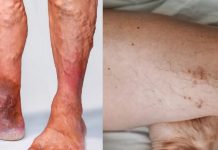Overview, Causes, & Risk Factors
Chronic obstructive pulmonary disease, also called COPD, is actually a group of lung diseases. People with COPD have limitations in the airflow through their airways. The limitation usually worsens over time. Lungs of people with COPD become easily inflamed from noxious particles or gases. The airways produce extra mucus, which is coughed up as sputum.
Chronic bronchitis and emphysema are two common types of COPD. Chronic bronchitis isan ongoing inflammation of the large airways. Emphysema is a chronic disease in which the tissues of the lungs are gradually destroyed.
What is going on in the body?
Chronic obstructive pulmonary disease is caused by exposure to noxious gases or particles, especially cigarette smoke. Over time, this exposure damages the airways. The airways try to protect themselves by making more mucus. However, the lungs may slowly get damaged from chronic irritation. The increased mucus and lung damage can be permanent.
The World Health Organization (WHO) has recently developed a classification system for the severity of COPD. There are four stages of severity, as outlined below:
- Stage 0, or at risk for COPD. These people have chronic cough and sputum production. Their lung function tests are still normal.
- Stage I, or mild COPD. Individuals in this group have mild limitations in their airflow and changes in their lung function tests. They generally have chronic cough and sputum production.
- Stage II, or moderate COPD. People at this stage have worsening of airflow that leads to shortness of breath with exertion. Their lung function tests show marked limitations.
- Stage III, or severe COPD. Individuals at this stage have severe airflow limitations that impair their quality of life. Their lung function tests are markedly abnormal.
What are the causes and risks of the disease?
Cigarette smoking is the most common cause of COPD. The risk goes up with the amount of tobacco smoked, and the number of years of smoking. COPD is most common in countries where smoking is prevalent. It is less common in countries where people smoke less. Passive smoking, or exposure to secondhand smoke, does increase a person’s risk for COPD.
Other risk factors for COPD include the following:
- asthma
- hereditary deficiency of alpha-1 antitrypsin, an enzyme involved in lung function
- indoor air pollution, such as smoke from home cooking or home heating fuels
- low birth weight
- occupational dusts and chemicals
- outdoor air pollution, such as motor vehicle exhaust fumes
- severe childhood respiratory infections
Symptoms & Signs
What are the signs and symptoms of the disease?
Typical symptoms of COPD are cough and sputum production. Following are some other symptoms of COPD:
- shortness of breath, which tends to worsen with exertion
- swelling in the legs and feet
- wheezing, which is a high-pitched sound made when the person breathes
Diagnosis & Tests
How is the disease diagnosed?
Diagnosis of COPD begins with a medical history and physical examination. Lung function tests can identify COPD in Stage 0, even before the individual has symptoms. Lung function tests measure how much air a person can take in with a deep breath. They also measure how fast the person can push the air back out of the lungs. The healthcare provider may also order a chest X-ray and blood tests.
Prevention & Expectations
What can be done to prevent the disease?
Many risk factors for COPD can be completely eliminated. Smoking cessation is vital for those who smoke. Sources of indoor air pollution can be identified and removed. It’s important to avoid secondhand smoke.
What are the long-term effects of the disease?
COPD is the fourth leading cause of death in the world. The long-term effects depend on how severe the COPD is when diagnosed and if a reduced exposure to the lung irritant occurs. The most effective treatment is quitting smoking. This will typically result in a modest improvement or no further decline in function. People with COPD have a higher mortality than those with normal lung function. Causes of death include respiratory failure, lung infections such as pneumonia and influenza, and other diseases related to smoking. These include cancer, heart disease, and stroke.
What are the risks to others?
COPD is not contagious. However, people who live with smokers have significant health risks because of their exposure to the smoke.
Treatment & Monitoring
What are the treatments for the disease?
WHO has identified the following four components for management of COPD:
- assessing and monitoring the disease
- reducing the person’s risk factors
- managing stable COPD
- managing exacerbations, or episodes where symptoms are worse
Assessment and monitoring
Assessment and monitoring of the disease incorporates the following steps:
- identification of people at risk for COPD, even if they don’t have symptoms
- performing lung function tests to measure airflow limitations
- doing a medical history and physical exam to evaluate symptoms
Reducing risk factors
Reducing the person’s risk factors includes the following measures:
- avoiding vigorous outdoor exercise when air quality is poor
- smoking cessation, if the person smokes
- limiting exposure to secondhand smoke
- reducing occupational dusts and chemicals
- eliminating sources of indoor pollution, such as wood-burning stoves
Managing stable COPD
Management of stable COPD includes the following:
- learning to identify and avoid risk factors
- learning to identify problems and seek appropriate treatment
- taking medications as directed
WHO recommendations for management of COPD are broken down by the severity of the disease. Following are recommendations for Stage 0 COPD:
- getting a flu vaccine once or twice a year
- using antibiotics only for bacterial infections, but not for COPD itself
- identifying and eliminating risk factors
Recommendations for Stage I COPD are the same as those for Stage 0. In addition, people with Stage I COPD should use short-acting bronchodilators as needed. Bronchodilators relieve cough and shortness of breath by opening the airways. In general, WHO recommends inhaled bronchodilators rather than oral medications.
Recommendations of Stage II COPD include the recommendations from Stage I. Additional measures are recommended for times when symptoms are present, including the following:
- using long-acting bronchodilators on a regular basis
- using inhaled glucocorticosteroids, for people with significant cough or shortness of breath
- participating in a pulmonary rehabilitation program, which uses teaching and exercise to improve lung function
WHO gives the following recommendations for Stage III COPD:
- using long-acting bronchodilators regularly
- taking short-acting bronchodilators as needed
- seeking treatment for complications, such as pneumonia
- participating in a pulmonary rehabilitation program
- using oxygen as needed
- discussing surgical options with the healthcare provider
Managing exacerbations
People with COPD may have worsening, or exacerbation, of symptoms when they develop a respiratory infection. Symptoms may also be worsened by cigarette smoke, as well as other factors. WHO guidelines for management of exacerbations include the following:
- increasing the dose and/or frequency of inhaled bronchodilators
- taking oral glucocorticosteroids to decrease airway swelling
- taking antibiotics for bacterial infection
- taking oxygen by mask or cannula
- being on a ventilator, or artificial breathing machine
What are the side effects of the treatments?
Bronchodilators may cause an increased heart rate and blood pressure. Oral glucocorticosteroids can cause increased risk for infection, high blood sugar, and osteoporosis. Antibiotics can cause rash, stomach upset, and allergic reaction.
What happens after treatment for the disease?
Early diagnosis of COPD and effective treatment can slow its progression. People who eliminate risk factors and follow treatment guidelines have better outcomes. Those who continue to smoke may be increasingly disabled by breathing problems and complications of COPD.
How is the disease monitored?
COPD is monitored through regular visits with the healthcare provider. Lung function tests can be used to monitor limitations in airflow. Any new or worsening symptoms should be reported to the healthcare provider.
Article type: xmedgeneral














































